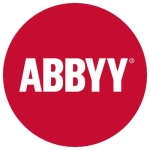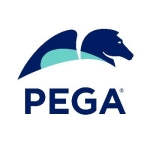What is our primary use case?
We have around more than 300 bots that are active right now. All the automation we have is based, basically, on Oracle and Oracle ERP. We have other automation as well, however, for now, I am focusing only on Oracle-based automation.
We have so many other use cases that we want to implement within our organization. We try to look at how we can save time for our employees so that they can spend their time on other valuable things, and not waste their time on unnecessary time-consuming tasks.
Our employees use Oracle ERP, so they have to process so many invoices at one time and it takes a lot of time to consume a single invoice. I'd estimate it would take at least 5 to 10 minutes. But with the automation, we can process one invoice within a minute, or maybe less in some situations. It saves a lot of time - likely hundreds of hours for each employee. It saves manpower for the company and saves you valuable time for the employees. They don't have to do the same things again and again and waste their time on that.
For example, if they have to download an invoice and process that for some reason. They have to go to some ERP tool, log it onto that first, type in the information, and then download the invoice. It takes a lot of time. They don't have to do this once or twice, it's hundreds of times due to the fact that they're not for the same couple of invoices. Therefore, this is one of the best use cases that we have for now. We are still looking for other future use cases, but for now, this is the one we have.
What is most valuable?
UiPath is saving employees hours of time and has also been able to dedicate their free time to more valuable tasks.
The most valuable feature of UiPath is the time-saving employees get. It's definitely sometimes complicated for the developers when they are automating. However, from a business point of view, I would say this is one of the best tools that every organization should have, to help save time and work hours.
Sometimes if you are doing the same task, again and again, we do make mistakes. Automating those tasks removes that human error. Also, with those types of tasks, a human gets annoyed very, very soon if they keep doing one thing again and again. With the help of robots, we can fix it. There is no error with the bot. The only error would be if there is an exception if something is wrong. That said, from a business point of view, when I'm working on a bot, I make sure that it is not throwing any errors and making sure that there are no mistakes. From a development point of view, we can always fix that, however, we don't want our bot to have an error on the production level.
The ease of use and building automation using UiPath is pretty straightforward. It's not complicated. Even a person who is non-technical can become a citizen developer and use StudioX to automate some of the tasks that they think are time-consuming for them. Otherwise, from a developer's point of view, I don't find it complicated. Initially, when a user is learning and at the initial stages of learning RPA, it's definitely complicated, however, once you get used to it, it's pretty straightforward. I love working as an RPA developer.
UiPath has saved costs for our company. I don't have any metrics on the spot, however, I would say it's a big amount of saving. Our organization is very happy that we are using UiPath. We have a few complications right now, however, in a few months we'll fix everything. By next year, when everything is all settled down within our team, then we can start looking at exact metrics in terms of cost savings.
Our teams have used the UiPath Academy courses. I have been using UiPath Academy for a long time. I tend to keep on checking what's new at the Academy. If something new is there, I always try to learn it as soon as possible. If somebody were to ask me "How can we learn UiPath?" The first answer I’d give them is, "Just go to UiPath Academy and follow the learning path over there." That's what I always recommend to any new person.
UiPath Academy courses have positively affected the process of getting employees up to speed in UiPath. It’s helping employees and companies to learn, and I would say it's a one-stop place for anything related to RPA. You don't have to go to other places. You will find everything at UiPath Academy. Sometimes it doesn't have too much detail on the advanced level of things. However, it provides enough information that you learn by experience. If you need more information, you also have access to the UiPath Forum for that.
The biggest value of the courses is that they definitely save time for someone who wants to learn. I don't have to read a book and I don't have to go to any other place or learn from multiple sources. Everything is in one place and I can just follow the learning path and it's a good education in the tool.
Sometimes we don't see what processes can be automated. When we think that, "Okay, we can do that. It's not so time-consuming," however, we can figure it out with the help of UiPath apps and we likely will use them in the future to automate even more.
What needs improvement?
In terms of improvements, to be honest, I don't have anything I'd want to be added right now. If I have any problems, UiPath is always there. It's easy to find everything. I don't think anything can be improved. It's going very well. It's working for us.
They could always continue to add new features, however, I don't have anything specific in mind right now.
For how long have I used the solution?
We have been on UiPath for almost more than a year now within our organization.
What do I think about the stability of the solution?
I'm satisfied with the stability of UiPath. It's good.
What do I think about the scalability of the solution?
UiPath is always there if you want to scale over UiPath-related items. It is scalable.
In terms of who uses the solution, on my team, it's only me who is an RRP developer. That said, every person in the team knows what UiPath is, and they are joining bots onto the system on a daily basis if they have something to do. In the finance department, there are almost 40 to 50 people using UiPath. It might be more. We have more than 300 bots active right now, and I'm not working on all the bots. We definitely have other developers and other people who are working on it in other divisions within the company.
We also do have plans to create more bots. We are going to use the UiPath apps in the future to see what kind of automation we can do there as well. for example, the Task Capture is a good tool. We haven't used that yet, however, sometime in the future, I would love to set it up for everyone on my finance team and run that application in the backend so that we can see what processes might be automated.
How are customer service and support?
UiPath support is amazing. We talk with someone on a weekly basis. They suggested we use UiPath technical support as we were having a few technical support issues with UiPath and we couldn't figure it out. When I submitted a ticket at UiPath, they were able to answer within a few hours. At maximum, we would get a response in one day. Not more than that.
They also answer with a solution, and the solution always works. I'm very satisfied with them. We don't have to search on the forum and do our own research. We just submit a ticket and once they get back to us, implement the suggested method and after that, it's all good. I'm really, really satisfied with UiPath's level of technical support.
Which solution did I use previously and why did I switch?
It's my understanding the company did not use a different RPA tool before UiPath.
That said, there are so many automation tools and I do know a few. There's Blue Prism, Automation Anywhere, and Microsoft has their Power Automate. I'm not familiar with all of them as my focus is only on UiPath for now. I haven't used others. I wouldn't be able to compare them. UiPath does seem to be one step ahead, however, as others do not have a free learning academy the way UiPath has. They do not offer a free trial version initially either. That is the best thing UiPath has done from a business point of view.
How was the initial setup?
I was not present for the initial setup of UiPath.
What was our ROI?
While I do not have an exact ROI metric, it's my understanding that we have saved way more than the solution costs.
For example, if we are spending, for example, $300,000 on the licenses in a year, and we are definitely saving more than $1 million, or maybe more than that. due to the number of hours that we are saving, it's a huge amount of savings we're receiving.
What's my experience with pricing, setup cost, and licensing?
The pricing is worth it. It's definitely expensive, however, I wouldn't say it's overpriced. The services that we are getting from those licenses help us to save way more than what we are spending.
Which other solutions did I evaluate?
My managers were telling me that they were comparing which tool to use before choosing UiPath. While I'm not sure what they were looking at, they said they liked UiPath from the first day and that's why they're sticking with UiPath now.
What other advice do I have?
Maybe in the future, we might switch to the cloud, however, for now, we have an on-prem deployment. We're using the most recent version of the product.
We do not use UiPath's AI functionality in our organization yet. We are not using all the UiPath apps right now.
My advice to potential new users is that the first thing that they should do is they should go to the Academy just to get familiar with the tool and how they can use it. Then, move through to the next steps.
I'd rate the solution at a ten out of ten.
Which deployment model are you using for this solution?
On-premises
Disclosure: My company does not have a business relationship with this vendor other than being a customer.

















